Moisture-resistant drywall: characteristics and application
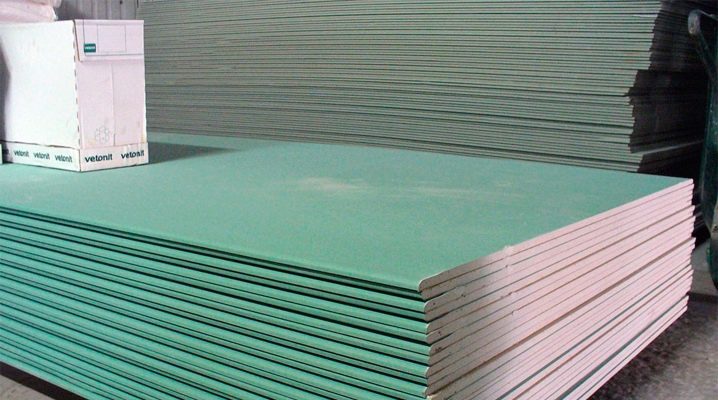
Ordinary cardboard gets wet quickly when it comes into contact with water. Therefore, a moisture-resistant type of drywall is most often used as a finishing material. Before buying, it is important to study its basic parameters so that working with it does not cause difficulties.
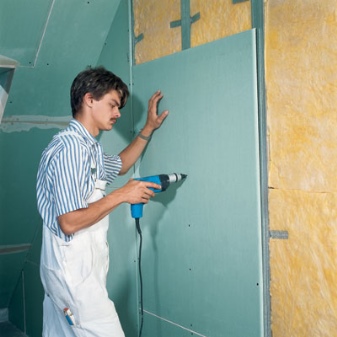
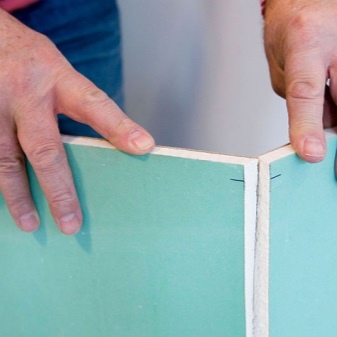
What it is?
Explanation of the abbreviation GKLV - moisture resistant gypsum plasterboard. This coating allows you to finish kitchens, bathrooms, toilet or shower. It differs from ordinary drywall in its internal structure and chemical composition. The external color in most cases is green, light green, occasionally pink materials are produced.


The use of gypsum board is very wide, it is one of the most versatile finishing materials.
It is easy to use in residential and non-residential buildings for the purpose of:
- sheathe the wall;
- build a partition;
- create a complex decorative element;
- make a tiered ceiling.

The best result is achieved when moisture-resistant gypsum board is used in rooms with excellent ventilation, which are regularly ventilated. Attention should be paid to corporate labeling. Group A is more even than material in category B, and it lasts longer. On the other hand, such coverage will be invariably more expensive.

Any material has advantages and disadvantages., and moisture resistant drywall is no exception. It is important to remember that no treatment can raise its water resistance higher than 80%. This means that it is undesirable to use such material in the bathroom without subsequent staining or overlapping with decorative tiles. For the rest of the indicators, GCR manifests itself much better.


It is completely safe in sanitary terms, easy to install, does not require any special care.
Peculiarities
The technical characteristics of the gypsum plasterboard are due to the fact that it consists of gypsum containing hydrophobic additives, and a pair of layers of cardboard, which are processed in a special way. This solution is at the same time protected from moisture and fungi. But each manufacturer naturally has its own secrets that cannot be read in GOSTs or other regulatory documents.


The thickness of drywall varies from 0.65 to 2.4 cm. The value must be selected according to the operating conditions and purpose of use. To make a wall in an apartment, it is worth using sheets not thinner than 1.25 cm. When arches and curly elements are created, the transverse dimensions are from 0.65 to 1.25 cm. High-quality products are invariably marked.
The manufacturer's notes provide data on:
- type of sheets and their group;
- execution of edges;
- the size and standard in accordance with which the product is manufactured.


The low weight allows you to use the drywall sheet without assistance and in almost any situation. The load on the supporting structures of the walls is minimal. One cannot but pay attention to the vapor permeability of drywall, because it is always made of porous gypsum. Typical drywall density is 2300 kg per sq. m. There are special varieties of this material for outdoor use, but they deserve a separate discussion.

Views
In addition to the usual GKLV, there is also GKLVO - this material is resistant not only to water, but also to fire.Moisture-resistant gypsum board invariably contains gypsum mixed with antifungal additives and silicone granules that increase the resistance to water. It is important to remember that even GCR marked as waterproof should be used only when its outer layer is protected with additional coatings.
Fire-resistant wall material, unlike simple one, perfectly resists the action of open fire due to the fact that the core is reinforced with reinforcing components.
Such a product is used:
- in production facilities;
- in ventilation shafts;
- in attics;
- in the decoration of electrical panels.

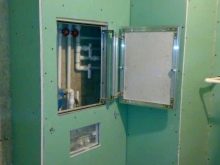

Plasterboard with a straight edge is not suitable for a bathroom under a tile.as it was originally intended for dry installation. This type of material does not require laying joints. Thinned edges are designed to facilitate pasting with reinforcing tapes and subsequent application of putty. The material with a rounded edge can be puttyable, but no reinforcing tapes are needed.


In cases where not only moisture protection is required, but also the containment of extraneous noise, it is more correct to prefer a water panel to moisture-resistant drywall. This material is also preferred if condensation is constantly forming or the surface is in continuous contact with liquid. In all other cases, the choice in favor of one or another option is exclusively a personal matter.

Dimensions (edit)
Typical dimensions of moisture-resistant gypsum plasterboard sheets range from 60x200 to 120x400 cm. The step in most cases corresponds to 5 cm. Plasterboard with a thickness of 10 mm is rarely used, much more often builders and repairmen need a material of 12 mm (to be exact, 12.5 mm). It is these three sizes that are considered the best in terms of strength and sound damping ratio.


Colors
The color of moisture-resistant drywall is green in most cases. This is primarily due to the need to designate a product category. Since in the most important rooms (bathrooms) another coating will still be mounted on top of the gypsum board, the uniformity of colors is not a drawback.

Selection and application
In addition to accompanying documents and green color, moisture resistant gypsum board has one more important difference from simple analogues. The plaster part of the structure is dark, and its edges are protected with a cardboard layer, this is important for maximum resistance to water. The width and length of the sheet allow you to choose the optimal solution for almost any room.

The fewer joints you have to make, the easier the work will be and the more reliable the decorated wall will be. This is important to consider when assessing the required material dimensions.
Those who have already had to install ordinary drywall can easily cope with its waterproof counterpart. The similarity is manifested in the installation of a metal frame, in the composition of the necessary tools and guide parts.
You will invariably need:
- self-tapping screws;
- dowels;
- profile structures;
- means for marking;
- hole preparation tool.


It should also be borne in mind that the cost of a moisture-resistant sheet is slightly higher compared to a conventional finishing material. In humid rooms, installation should be carried out only with good ventilation and with a smaller distance between the parts of the grille than in a standard situation. Only aluminum is used to prepare the frame in the bathroom; wooden parts cannot be used. Any seam is sealed very carefully and always find out before starting work which side of the sheet is the front. It is advisable to fix the screws at a distance of 20 cm from each other.
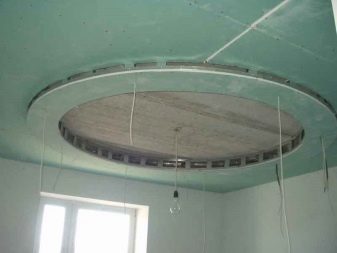

You can install moisture-resistant drywall with or without a frame. If a method without a frame is chosen, it is required to thoroughly prepare the surface, remove all the old coating from it. Next, a primer is applied, which not only prevents the development of harmful organisms, but also improves the adhesion of the adhesive composition.
The glue itself is applied either along the perimeter or in blotches. The first method is chosen when the wall is in perfect condition and does not deviate from the vertical. The sides of the cardboard are coated with glue, for greater reliability they are placed in the form of two more strips at equal distances from the edge. Next, the processed block is applied to the wall and leveled, focusing on the readings of the building level. The entire surface of the sheet is lubricated with glue. The masters decide on their own whether to apply the glue mixture to the wall surface or not, but this step will help to avoid cavities under the finishing layer.

GKL is supposed to be glued in a room where there will be no drafts, otherwise the glue will dry out before providing normal adhesion. At the temperature and humidity specified in the instructions, solidification will occur in 24 hours. Then the finishing material is primed, a day later, when it is soaked, it is treated with a universal compound and then painted or wallpaper is pasted. For your information: you cannot glue the tiles on drywall installed using frameless technology.


When using a frame, a plaster side is attached to it, which is denser and harder. Installation of guide profiles is done along the lines connecting the lowest corners of the surfaces. To ensure maximum rigidity of the structure, suspensions are placed approximately every 5 cm. To form curly elements, only a small-format gypsum board sheet is used, which is cut into certain shares.
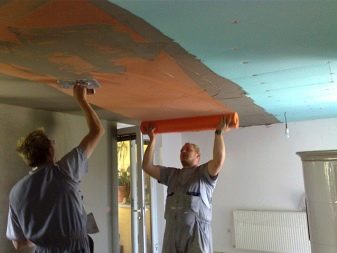

Tips & Tricks
Many people who do not have significant experience are confused by the question of which side to fasten the sheets of moisture-resistant drywall. The answer is quite simple: you need to look at how the groove is located, which appears when placing the end at an angle. You can not pay any attention to the color of the sheets, it does not allow you to make the right choice.
Builders need to leave gaps between the joints of the gypsum board, in order to properly treat even the smallest part of the surface with a putty. It is recommended to putty twice (before and after applying the primer). Further, the surface is treated with water-resistant compounds in order to maximize its protection against water ingress.
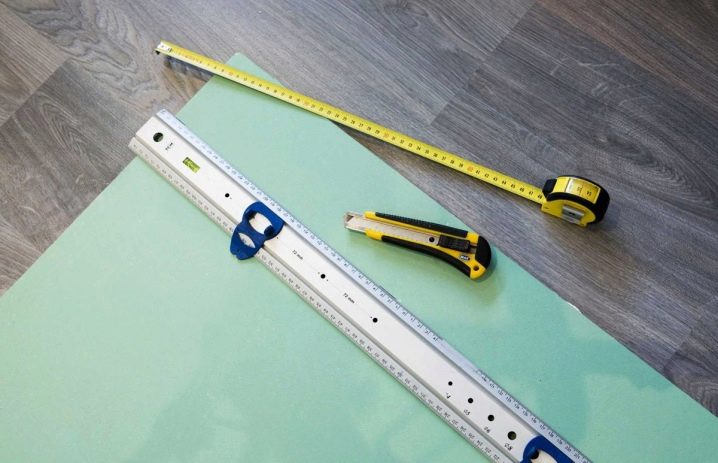
People are not always satisfied with the uniform appearance of the plasterboard surface. In this case, you need to create additional coverage - for example, glue wallpaper. Professional builders do not consider such work too difficult, but as in any business, there are certain nuances, ignorance of which can let you down.


Puttying drywall under wallpaper is much easier than for subsequent painting or decorative plaster.
Cardboard is the same paper, respectively, the wallpaper glued to it without additional processing will hold very firmly, so much so that it is almost impossible to remove them without destroying the structure. The choice is obvious, because even two or three days of preparation is clearly more profitable economically than a complete alteration of the room during the next cosmetic repair. In addition, the green base and the markings on it will show through, and these seemingly insignificant details can violate the concept of the interior as a whole.

Regardless of economic considerations, you should use at least two spatulas - wide and medium. If they are not there, it is worth purchasing a whole set at once, all the same, these useful tools will come in handy more than once. Instead of a screwdriver, you can do with a high-quality screwdriver, but without a construction knife, the work is impossible.
It is most convenient to knead the putty in plastic buckets with a capacity of 5 or 7 liters, and it is recommended to use small silicone containers directly for work.


The soil itself is applied with soft brushes or rollers, characterized by increased absorbency. Builders try to dilute dry putty with a special mixer, and if you do not have to do such work often and for a long time, you can limit yourself to a special drill attachment.As for the compositions, the usual finishing putty is quite enough for finishing drywall walls. The classical technology (with a preliminary layer) is too expensive and not justified in this case.


To trim drywall under wallpaper is most correct with a cement composition, since it is he who is more resistant to gypsum and polymer to the destructive action of water. Before starting work, the surface is carefully inspected in order to assess the build quality and correct possible deficiencies in it. They check that all the caps of the self-tapping screws are only slightly sunk into the cardboard, and do not protrude outward or go very deep. The smallest and most imperceptible to the naked eye defects will be detected by checking with a smoothly moving spatula.


Self-tapping screws driven too deep require additional fixing of the sheet with another fastening element (but the distance between it and the problematic part must be at least 5 cm). Skipping a deeply embedded self-tapping screw can lead to the fact that after a while it will break out, and then the sheets will begin to crack, and the wallpaper will stretch and even tear. The fringe on the outer edge of the sheet is removed with a knife. Finally, sandpaper helps to cope with its remnants. It also removes visible traces of mold, but a major fight against the fungus is possible only through the use of complex soils, which effectively suppress microorganisms.

If the leaf is damaged by the fungus, it is primed two times in a row.
The outer corners are necessarily reinforced; metal or plastic perforated corners are perfect as reinforcing elements. Experts do not recommend using galvanized steel metal, because at the slightest violation of the protective layer, rust will soon be noticeable through any wallpaper. For home use, an aluminum corner is best suited, it is quite light and strong at the same time.
Corner structures are pressed to the planes after applying a uniform layer of primer to them. The pressure should be firm, but not too vigorous, because otherwise the corner will bend. Even if there is no rule at hand, any solid bar can replace it. It is important to keep a spatula ready and level out the portions of the substance protruding outward with it.

It is necessary to putty using a medium trowel (blade width - 20 cm). The finished composition is neatly distributed along the length in small doses. Work is carried out from top to bottom until the reinforcing structure is hidden under a layer of putty.

It is recommended to prepare a sketch before starting work and subsequently act strictly according to it.
Support strips need to be placed in each of the corners, only then the frame will perform its task efficiently and fully. The profile should not touch the edge of the sheet, so as not to create additional problems.

When creating a frame, a profile of various configurations (named after similar letters of the Latin alphabet) can be used:
- W - large for common frames;
- D - needed to make the plane of the lattice;
- UA is a product of increased strength and with a maximum thick wall.



A shape like the letter "P" indicates that the ends of the support profiles should be inserted into such a product. For a moisture-resistant gypsum plasterboard, the step of installing the profile is 0.6 m. In cases where a gap appears to the wall, it must be closed with cardboard or wood products. Alternative solutions are mineral wool and foam rubber (the second option is more convenient and practical). Partitions and other isolated structures do not need special insulation, it is only necessary to close the voids that serve as a refuge for insects and worsen sound insulation.
When selecting fasteners (self-tapping screws), one should clearly distinguish between products intended for fastening on metal and on wood, since they cannot replace each other.The self-tapping screw closest to the edge must move at least 0.5 cm away from it, otherwise cracking and delamination is inevitable.

Regardless of how well the work is done, in a number of rooms it is also very important to insulate the walls under a layer of drywall. In the bathroom or in the basement, it is quite enough to step back from the wall during installation so that the formed layer of air fulfills its task. But on balconies and loggias, it is possible to use gypsum plasterboard, even moisture resistant, only on condition of high-quality glazing - at least a two-chamber double-glazed window. When additional insulation is used, an air gap is left, which prevents both materials from getting wet.

Manufacturers and reviews
The undisputed leader in quality is products German concern Knauf... After all, it was he who first began to create modern drywall and still controls almost three quarters of the world market. Consumers most of all value options with a thickness of 12.5 mm, but besides them, there are a lot of options that differ in their characteristics. Any parameter of the production of a German company is highly valued, and the only problem is its significant cost.


Russia has its own leader - Volma company... This company has production facilities in Volgograd, where the production of all types of gypsum boards is established. For over ten years now, products under the Volma brand have been supplied to all major cities of the Russian Federation, so there is no risk when buying it. And this is a better recommendation than any rave reviews.


A fairly serious competition for the Volga manufacturer is the Ural Gifas group of companies... She specializes just in waterproof drywall, and builders note its high quality, which is no worse than that of foreign suppliers.
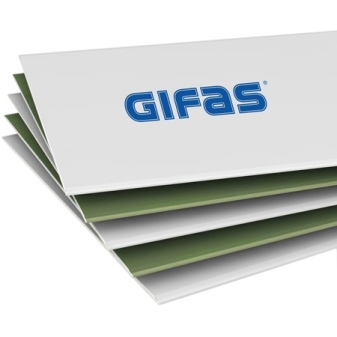

Successful examples and options
The possibilities for finishing with moisture-resistant plasterboard of damp spaces, including semi-basements, are quite large. White ceramic tiles effectively help to increase the resistance of structures to the destructive action of moisture. And in bathrooms, they can be used both for wall decoration and for shielding the space under the bath.
Following the simplest recommendations, you can reliably mount drywall. Whether to focus on the wishes of designers or on your own preferences when decorating it is the choice of the owner of the room. But all technical aspects must be strictly observed.


For the options for using moisture-resistant drywall, see the following video.













The comment was sent successfully.